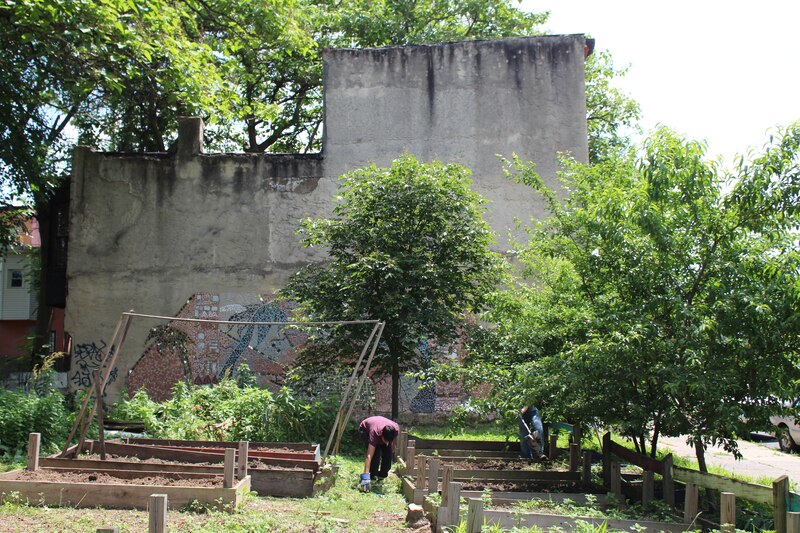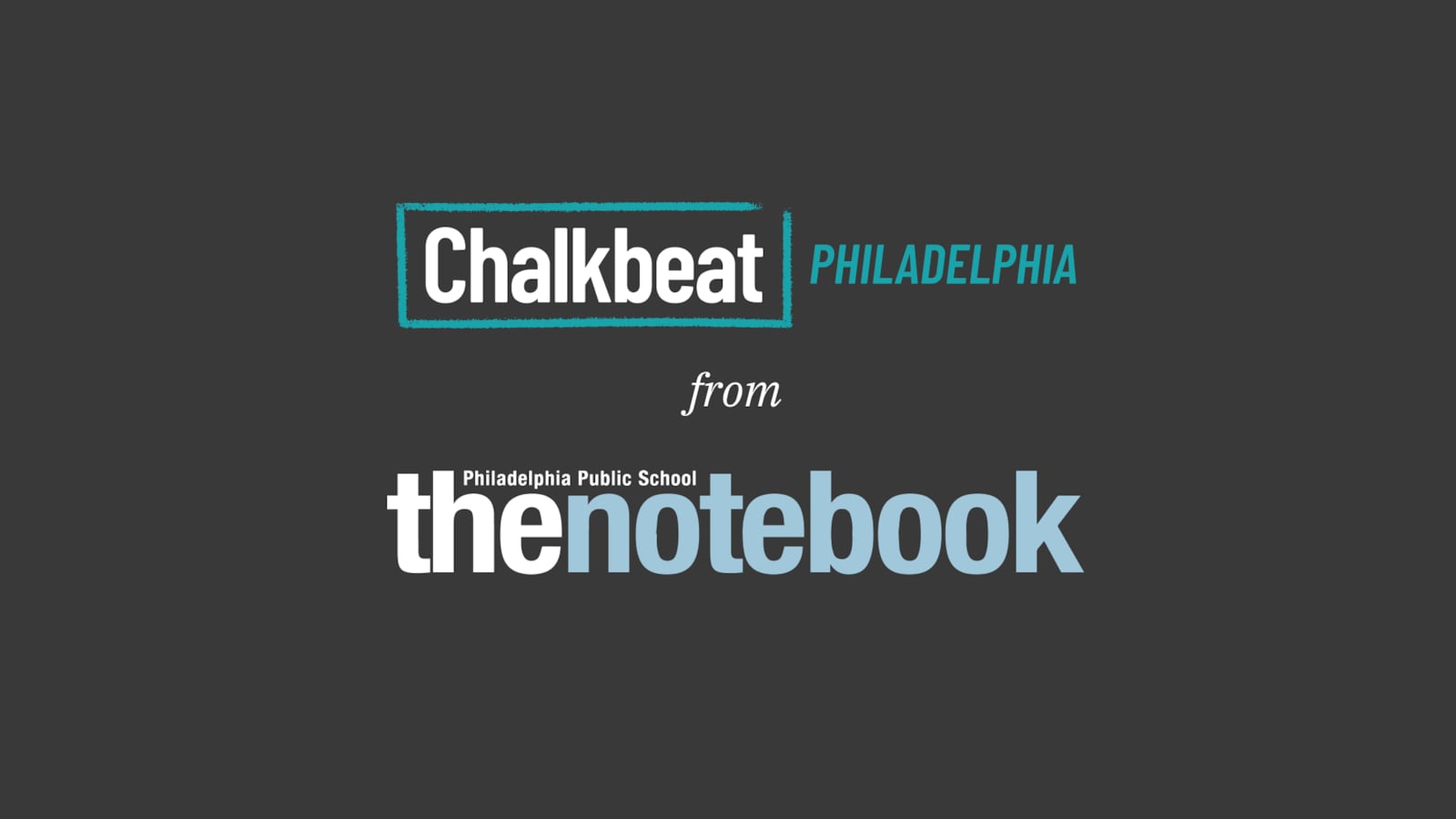This article was originally published in The Notebook. In August 2020, The Notebook became Chalkbeat Philadelphia.
Updated to correct location of panel.
The North Philadelphia Peace Park, carefully but unofficially tended for five years by residents intent on beautifying their neighborhood, prides itself on being more than a park. Scattered with colored tires, the grassy plot supplies the community with fruits, vegetables, and a place to relax.
After a long battle with the locals over its original site, the Philadelphia Housing Authority entered into a ground lease with the Peace Park at the end of last year at a new location, giving it the security of official status. Now, the Peace Park is planning to increase its influence in three major areas: agriculture, education, and design.
Starting in September, the Park will expand in two directions. It will begin a partnership with Vaux Big Picture High School, hosting interns from the school, and the community is scheduled to break ground on a new school house on the “main campus” of the park, located in the 2200 block of West Jefferson Street.
A new plot near Vaux
Working with the high schoolers, the Peace Park plans to develop a plot across the street from Vaux school on Master Street. Student interns will be responsible for designing the area, gardening, and further cultivating the land around the planter boxes and fruit trees that are already there.
The progress, though, is more than physical. Tommy Joshua, who is head of the park, a lifelong Sharswood resident, and a Vaux alumnus, says the “green program” has two goals: “to produce master gardeners and master creative practitioners … and to establish micro-industries in this neighborhood that would benefit the residents and benefit students.”
David Bromley, executive director at Big Picture Philadelphia, is equally excited for the program to start, especially given Joshua’s history with Vaux.
“The more we can connect with people from the community that have this legacy of Vaux, it’s all the better for the kids, the school, the families,” Bromley said.
Originally a junior high, then a middle school, and finally a high school, Vaux was shuttered entirely in 2013. This past school year, Vaux Big Picture High School was opened after the Philadelphia Housing Authority purchased the school building and partnered with the District, the Philadelphia Federation of Teachers, and Big Picture, with the goal of restoring a high school to the neighborhood. The Peace Park fits in well with Big Picture, an education organization that operates hands-on, project-based schools.

Two Bryn Mawr students, Ritvika Patodia (left) and Sarah Kalen, working as interns, help prepare the campus of the Peace Park that is across the street from Vaux Big Picture High School.
“We are excited about the work the Peace Park is doing with Vaux … in their efforts to develop a Green Economy project-based curriculum,” wrote PHA public affairs director Nichole Tillman in an email.
Design justice
Along with the partnership with Vaux, the Peace Park plans to construct a school house on its main campus. The building was designed by Joshua, the firm Bohlin Cywinski Jackson, and University of Pennsylvania students, including graduate Maya Thomas.
Thomas became involved through Penn and has continued after graduation.
“We were really interested in design justice and how architecture had been oppressive and how we can really design things and work with the community and use design as a way to kind of decolonize and buffer gentrification,” explained Thomas.
Joshua, who has been a community organizer since age 16, elaborated on the design process. He explained that they “explored Afrofuturism [the intersection between technology and African culture] and the idea of time and cultures and memories.” After PHA gave the Peace Park its permanent site, architects were called in “to combine the tradition of the North Philly Peace Park with community design.”
The resulting building “combines module style construction with rammed earth construction techniques.” Bricks from the collapsing and demolished buildings in the neighborhood will be crushed, then a solvent will be added. The resulting bricks will form the walls.
Joshua, who attended Temple University, noted that “the building … is going to be clear” in order to preserve the “openness and transparency” of the Peace Park.
Thomas, the architect from Penn, said the building would contain a virtual reality room, a science laboratory, and a library where kids can relax, read, and do their homework. There will also be a kitchen where people can learn to cook.
These resources will serve the community through afterschool activities and enrichment programs run by volunteers and hired teachers.
The educational instructions were “intentionally developed to the Peace Park style of education, which is a combination of experiential learning and a strong emphasis on [science, technology, engineering, arts, and mathematics] STEAM education and play space learning,” says Joshua.
Thomas hopes this kind of education system will inspire “longtime residents to stay in [North Philadelphia] and feel like their neighborhood is special.”
The Peace Park relies on volunteers to operate. Work parties are held from 11 a.m. to 4 p.m. on Sundays. On July 6th from 5 p.m. to 7:30 p.m. a panel featuring principal architects, local stakeholders, and urban planners will be held at The Barnes Foundation, 2025 Benjamin Franklin pkwy. Email mythmediastudios@gmail.com to request a discount code for free tickets to the panel. Register and reserve the tickets at https://www.barnesfoundation.org/whats-on/talk-north-philly-peace-park .

